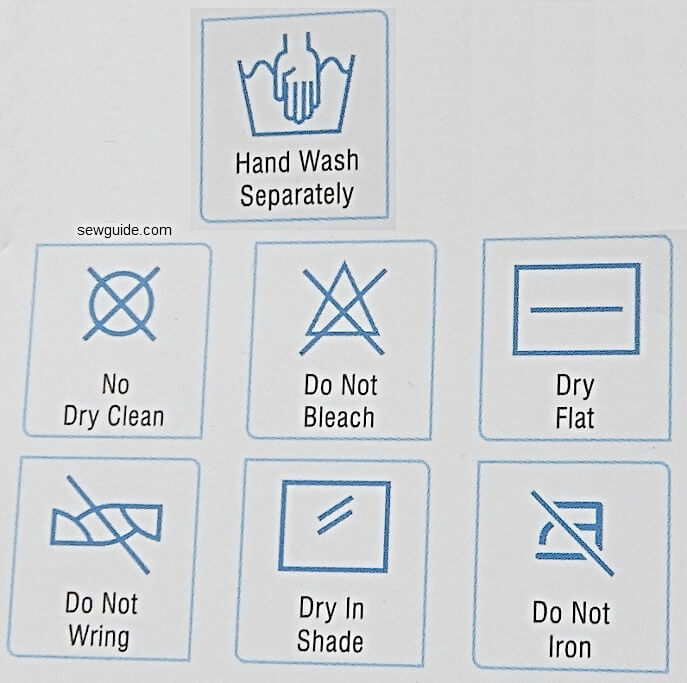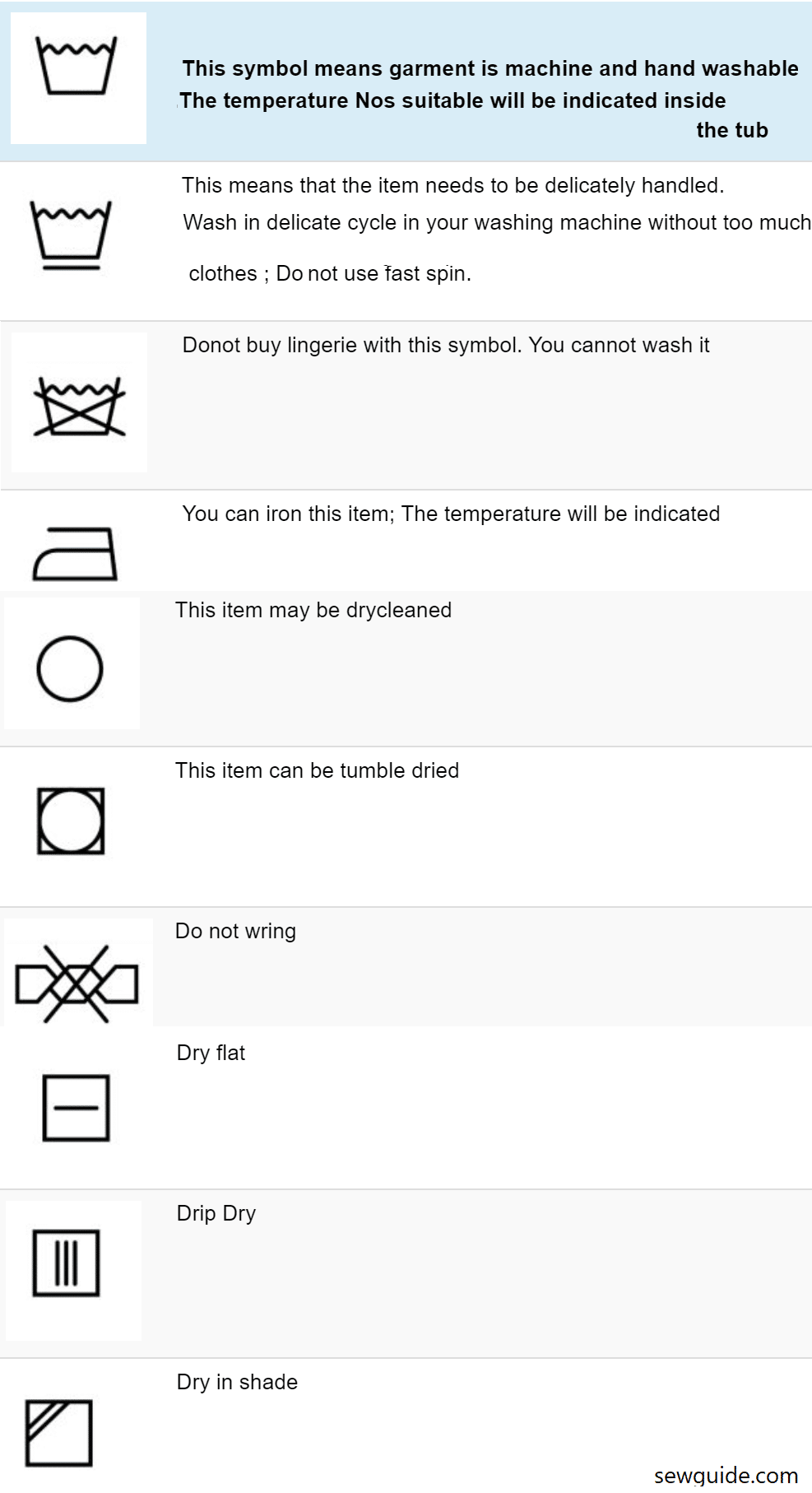If you take care of your things they will last a long time – this adage cannot be more true for clothes than anything else.
Most of the dresses you get in shops nowadays are ‘use and throw’ stuff. Not keepsakes that you save for generations. But there maybe some clothing in your wardrobe which you want to keep wearing for a long long time – the classics, the ones that fit you well, the heirloom one, or one of sentimental value like your precious wedding dress. And all you need to do is bestow some Tender Loving Care to your clothes. Here are some articles detailing how to.
- Easy Clothing Hacks every one should know (55 & counting)
- How to wash white clothes : 15 tricks to whiten them when dirty
- How to remove blood stains from clothes (Easy home remedies)
- How to protect yourself from Dry Cleaning Chemicals
- What is your laundry detergent made of?
- What is Dry cleaning? & Which clothes NEED drycleaning
- How to use Spray Starch or Sizing
- How to wash Pashmina shawls.
- Dry cleaning symbols & Do not dry clean symbol explained
- Soften and make wool less itchy (Easy ways)
- Using a leather cleaner and conditioner (why you need them)
- How to wash Rayon (& read the care label symbols properly)
- Wool wash symbol and meanings explained
- How to wash Elastic Spandex/Lycra clothes
- How to remove Butter Stains from clothes
- Suede leather cleaning tips
- How to wash black clothes to avoid faded look (& restore the dark color)
- How to PREVENT WRINKLES on clothes
- Wrinkle-free Fabrics : Are they real?
- How to wash Acetate fabric and care for it so it will last
- Laundry in Hard Water: Effective Solutions for Mineral Deposits, Soap Scum, and Detergent Issues
- How to IRON a shirt (Remove the wrinkles properly)
- How to wash & care for your Shirts
- How to use a Steam Iron properly
- How to WASH and Care for your JEANS
- How to clean and care for your HATS
- Using Fabric Softeners for enhancing Garment Texture and reducing Static Cling
- How to fold a Shirt properly : Save space and reduce wrinkles
- How to Clean and Care for Fabric Upholstery : Simple tips
- How to wash and care for Zari work : 10 Do’s and Don’ts
- How to clean clothes and textiles damaged in the Flood
- How to remove Tea Stains from clothes (Simple remedies)
- What is the best way to clean an iron plate :10 tips
- How to disinfect very dirty Clothes : 5 methods
- Faux leather care (10 Frequently Asked Questions answered)
- How to remove Turmeric Stains
- How to remove Urine smell and stain from clothes :10 Tips
- Shoe care : What do I need to do to keep shoes looking New for long?
- How to organize a small closet with lots of clothes
- Removing Crayon marks and other kids’ marker stains from clothes
- How to wash & maintain your precious Sarees : 10 simple Tips
- How to remove mildew/mold spots from clothes
- How to keep your Closet smelling good and fresh as ever : 5 simple tips
- How to wash socks properly : Maintain clean and long lasting socks.
- How to prevent Colour bleeding (& try to remove the spread color from clothes)
- The Plague of the “Faded clothing” : 10 workable Solutions to prevent fading of clothes
- 10 Different types of Detergents & other Cleaning products for clothes
- 10 Basic methods to CLEAN & WASH Clothes
- How to Iron Clothes properly (15 tips)
- How to prevent pilling on fabrics (& 10 easy removal tips)
- How to Shrink Clothes : 6 best methods for fabric shrinkage
- Best Stain removers : Home remedies for easy Stain removal from fabric
- How to avoid shrinking clothes (10 tips)
- How to remove stains from White Clothes (Easy home remedies)
- How to keep Dark Colored Clothes from fading in the wash
- Washing Bras & other Lingerie – 5 point checklist
- What is the best way to care for leather? (10 Questions answered)
- Using bleach in laundry? 18 Guidelines & the best bleach alternatives
- Remove INK STAIN from clothes (7 easy ways)
- Fabric care labels & Laundry washing symbols (& All the meanings)
- How to wash Woolen clothes (All important tips)
- How to store clothes so that they last for ages
- How to Wash Cashmere clothes – Top Tips according to its care label
- How to Wash Linen clothes
- How to get SWEAT SMELL out of clothes (15 tips)
- Will Polyester fabric shrink in the wash? What does the care labels say?
- Basic Fabric & Garment Care -Keep your favourite clothes fresh and new
- Homemade clothes starch & Fabric stiffener (10 Recipes)
- Simple steps I use to wash clothes in a Washing Machine
- How to wash Silk Clothes at home
- DIY laundry bag for delicates (Make your own lingerie wash bag)
- Best tips on HAND WASHING CLOTHES
- How to wash delicate clothes (Top Tips on caring for your delicates)
- How to keep LINT off your clothes (15 ways)
- How to press clothes/fabric (20 Essential Pressing Tips)
Basic Garment care -20 Rules to follow
Rule No. 1 First rule for taking care of your clothes is to buy quality clothes. If the garment is made of the best fabric with the best construction (good stitching; sturdy seams; interfaced hems and necklines) your job is made easier. Make sure that the seam stitching of the garment is strong and all embellishments are firmly fixed.
Rule No. 2 Always empty pockets, zip up the zippers, remove any pins, brooches, badges, and remove delicate embellishments like ribbon flowers before washing the garment. Also, separate clothes according to color before washing to make sure that colors do not bleed and latch onto other clothes.
Rule No. 3 Turning the clothes inside out before washing is another good idea to maintain their looks
Rule No. 4 Do not overload the washing machine and do not use too much detergent. 2 table spoon detergent per load is what I use and I do not think more than that will clean more. It will just add to the soap residue remaining on cloth and pollute environment more than it already does.
Rule No. 5 Do not wear socks and underwear more than once. This is basic hygiene as well as great for social skills. You do not want others to run away from you. No one will tell you the reason and you may never know that the reason.
Rule No. 6 If you have a very expensive dress or a garment that says dry clean only, do not take the risk of cleaning it yourself. At least for the first two-three cleanings give it to the professionals. Choose the best dry cleaner you have in your vicinity.
Do not settle for a cheap place – you will surely ruin your garment for the sake of saving pennies. Velvet, brocades, silk, expensive satin are all better left to the dry cleaners for cleaning. Tailored jackets and suits are also better dry-cleaned. Expensive clothes made of wool, acetate, rayon are all usually advised to be dry cleaned by the manufacturers (on the care label). Beaded and sequinned clothes will look better for longer when dry cleaned. If your clothing has any trims made of fur, leather, feathers – perfect candidates for dry cleaning unless you do not care. Stretchy sweater knit clothes, clothes made of open-weave fabrics also can be dry cleaned to prevent them from being shapeless. Another dress that you ‘should’ dry clean is one with a particular stiff shape – it may have been achieved by interfacing etc which will lose shape if cleaned at home.
Rule No. 7 Wash bed linen (bed sheets, pillowcases) and towels (kitchen towels, terry towels) separately from clothes. These fabrics give out lint and they will latch on to your clothes.
Rule No. 8 If possible wash lingerie by hand. But if you have no time for that, do wash the lingerie (especially brassieres) in a lingerie bag in the washing machine.

Checkout this tutorial to make a lingerie bag for yourself. The delicate lingerie will last longer.

You can read more details in this post on washing lingerie and bras.
Rule No. 9 Homemade detergents work as well as store bought detergents. Make them yourself. The harsh detergents maybe causing allergic reactions and you may not be aware of it.
If you have skin allergy symptoms, chemicals in the detergents used to wash clothes are usually a major culprit. Use a ph neutral detergent if you have allergies and you have to use store bought detergents.
Rule No. 10 Hang to dry colored-clothes away from direct sunlight or for a short duration. The colors may fade with exposure to sunlight.
Rule No. 11 Fold the washed and dried clothes and keep them neatly arranged inside the wardrobe rather than stuffed inside the laundry bag. There will be fewer wrinkles to iron.
Rule No. 12 Do not hang sweaters and other stretchy clothes (like those made with knit fabrics). They will stretch out of shape soon. They are best folded and laid down flat inside drawers.
Rule No. 13 Do not stuff your wardrobe with clothes. The best way is to remove not-in-season clothes or occasion-only-clothes into other luggage and store somewhere else. This way clothes will breathe easily.
Rule No. 14 Use appropriate hangers – rounded/padded hangers are great for hanging pants and shawls. Very thin metal hangers (plastic coated) are inexpensive but not so great for hanging your expensive clothes.
Never ever hang a wet cloth on these metal hangers. If there is a small crack on the plastic coating the metal stain will latch on to the fabric.
If you have suits / tailored jackets do use special padded hangers for them.
Rule No. 15 If you are hanging clothes for a very long time, ensure that you change the fold at regular intervals. Otherwise the folded line may start to wear away.

Rule No. 16 After wearing your dress if you notice that there is a spot in your dress made by a food spill or dirt, dab the spot with a wet tissue / cloth at once. With time (the time it takes you to get home and clean it) the stain may have set in permanently.
And never ever apply heat on stains (iron or dryer) – after this, whatever you do to remove the stain may not work.
(Do not do this if you feel that the fabric of your dress will bleed with wet spot cleaning; if so a dry swipe will be all you can do – and then take it to the dry cleaners). For more details on stain removal check out the post on getting stain out with natural removers here
Rule No. 17 A light brushing with a small garment brush may take care of dust. This brushing is also good for removing lint from the clothes
Rule No. 18 After wearing your dress if you see a tear in it, repair it immediately. Do not wait for repairing it after washing it – the washing will make the hole bigger. Mend it by darning or patching. Checkout these posts – darning ; mending tears on clothes; fix holes on jeans; sewing patches to repair clothes.
Rule No. 19 After you have worn a particular dress, and you are not going to wash it this time, check for any sign of dampness, even sweat. Hang it out (outside or inside under a fan) to dry before hanging it inside the wardrobe. Dampness will cause (especially from sweat) a bad smell. You can wear an underarm shield with very expensive dress shirts.
A dehumidifier in the room where the wardrobe is, can help contain humidity there.
Rule No. 20 Learn all you can about the way you should treat different fabric fibers. Refer to the chart below for caring instructions for different
How to take care of clothes made of different fabrics

Wool and silk
Wool and silk are natural fibers just like your hair. So take care of them the same way and they will look as good as new always. You may have to clean them professionally (at the dry cleaners) if their care label says so, unless you are ready to take the risk ( possible bleed, shrinkage).

Wash wool / cashmere / silk clothes with baby shampoo and hang to dry in cold water. Lay flat to dry for sweaters to prevent over stretchiness. Press from the inside before it is completely dry. Store in a dry dark place.
Do not hang wool clothes. They will stretch out of shape.Checkout this post on wool care for more tips

Checkout this detailed post on taking care of your cashmere clothes for more tips

Do not hang silk clothes in the same position for a long period. Checkout this post on more tips to take care of silk clothes

Cotton and Linen
These are woven fabrics that can be washed at home in the washing machine. They shrink after wash, so consider this shrinkage when buying clothes in cotton and linen. Dark-colored cotton and linen also bleed. The colors in these fabrics fade fast. A spray starch/dip and starch will make cotton and linen fabrics crisp and fresh, especially for collars and cuffs.
Some linen fabric has to be dry washed. Check the care label for correct information.
Iron cotton and linen from the inside, using steam at a hot iron setting.
Polyester and Nylon
Polyester and Nylon are easy to manage and care for – washing and drying are quite easy. You can tumble dry these fabrics. When ironing nylon and polyester clothes use low heat settings. The fabric burns at high temperatures.
Learn more about Polyester care here.



This was super useful for my organizing business. Do you have any article on how to fold/store each type of fabric/garment? For example, how to fold or hang beach robes
looking forward. to reading more. thank you
Thank you for the detailed explanation.I can not wait to practice them.